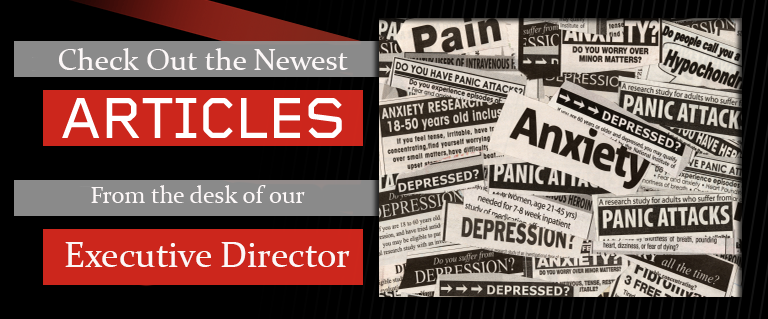From the Executive Director…
By Colleen Hendon
Raising the red flag about youth crisis during Mental Health Awareness Month
Since 1949, Mental Health Month has been observed in May to increase awareness of mental health and wellness. During this year’s commemoration, I want to bring attention to the public health crisis affecting our youth.
While youths were struggling with their mental health long before the COVID-19 pandemic, we are starting to see the negative impact of the pandemic. Unfortunately, there are groups of youths who have been disproportionately impacted. I will highlight some of those populations in this guest column, focusing on the unique challenges and the way our community can support our youth.
According to the Centers for Disease Control and Prevention’s (CDC) 2021 Youth Risk Behavior Survey, more than 40% of youths said that they’d felt so sad or hopeless within the past year that they were unable to do their regular activities for at least two weeks. Additionally, the CDC reports that suicide rates for ages 10-24 years increased 52.2% between 2000-2021.
For some local comparison, data from the Ohio Healthy Youth Environments Survey (OHYES!) survey reported that 31.77% of Licking County youths in 2020-2021 felt sad or hopeless almost every day for two weeks or more in a row during the past year compared to 24.3% in 2016-2017. In addition, 15% of youths surveyed in 2020-2021 reported they seriously considered attempting suicide during the past year compared to 13% in the 2016-2017 data.
Some of the groups who are at increased risk for suicide include Black youth, LGBTQ+ youth, and cis teen girls (those assigned female at birth and who identify as such).
The suicide rate among Black youth has been increasing faster than any other racial/ethnic group. Based on a study regarding trends of suicidal behaviors between 1991–2017, self-reported suicide attempts increased by 73% for Black high school students, while injuries by attempt rose by 122% for Black adolescent boys.
Another population at increased risk for suicide are LGBTQ+ youth. According to the Trevor Project, more than 45% of LGBTQ+ youth seriously considered attempting suicide in the past year, including more than half of transgender and nonbinary youth. Please note that LGBTQ+ youth are not inherently prone to suicide because of their sexual orientation or gender identity, but rather placed at higher risk because of how they are mistreated and discriminated against in society.
The 2021 CDC report also found that cis teen girls are experiencing extreme sadness. Nearly three in five girls felt “persistently sad or hopeless.” And a staggering 30% said they had seriously considered dying by suicide — this percentage has risen nearly 60% over the past 10 years.
Reading this information can be disheartening and even make us feel powerless. I don’t share this information to discourage anyone, but instead to spark a sense of urgency to act. I believe knowledge is power and early intervention is critical.
I know from first-hand experience the positive impacts of earlier intervention as I was diagnosed with anorexia nervosa and obsessive-compulsive disorder when I was 11 years old. I also struggled with suicidal thoughts. Luckily for me, my parents recognized the signs early and were able to get me the treatment that I needed.
That is why I am so passionate about youth mental health. It’s my mission to empower and educate parents, caregivers and other adults who interact with youth on how to recognize the warning signs of a mental health challenge and suicide and to intervene in an empathetic, caring and affirming manner.
Colleen Hendon is executive director of Mental Health America of Licking County. She has a master’s degree in public health from Kent State University and bachelor’s degree in journalism with a minor in health promotion from Bowling Green State University. She is a Certified Health Education Specialist and nationally certified Youth and Adult Mental Health First Aid instructor.
Your local Mental Health America agency is available to help if you need it. We can point you toward community resources. Don’t hesitate to call us if you need assistance (740-522-1341).
Welcome to MHALC and let us know how we can be helpful to you! Please feel free to call me at 740-522-1341 or send an email to chendon@mhalc.org.
Printed in the Newark Advocate on May 8, 2023.


